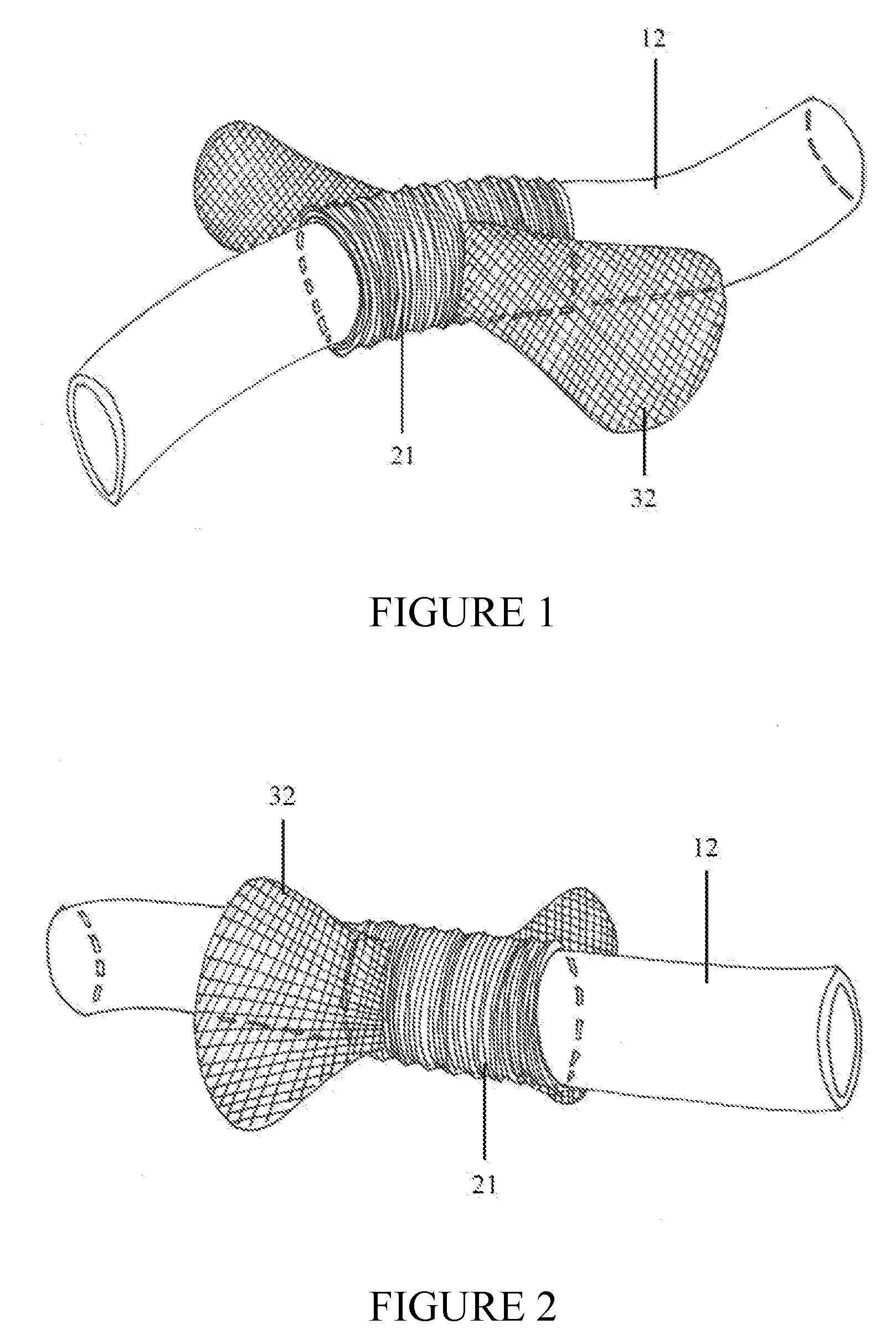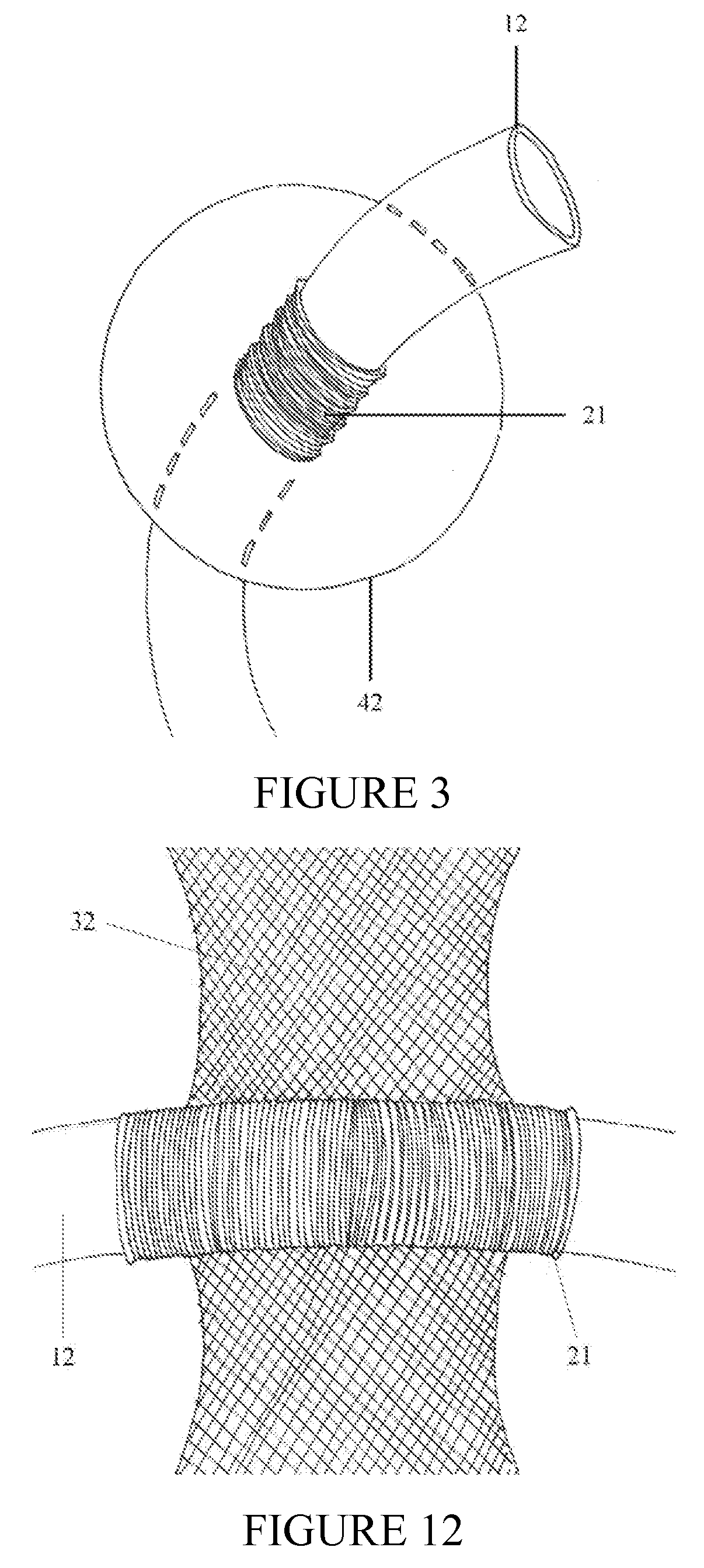Securement device for shunt catheter and implantation method therefor
a secure device and shunt catheter technology, applied in the field of shunt catheters, can solve the problems of shunts commonly molded from silicone tubing, easy failure, and fatality, and achieve the effects of less susceptible, enhanced csf flow, and reduced incidence of shunt malfunction
- Summary
- Abstract
- Description
- Claims
- Application Information
AI Technical Summary
Benefits of technology
Problems solved by technology
Method used
Image
Examples
Embodiment Construction
[0082]For purposes of clarity and brevity, like elements and components bear the same designations and numbering throughout the Figures.
[0083]FIG. 1 is a side view of an implantable device with a traversing peritoneal shunt catheter. In a preferred embodiment, cuff 21 is a circumferential sleeve of pliable material such as VELCRO®, TEFLON® or nylon mesh. Alternate materials such as urethane or silicone can also be utilized. Radio-opaque materials or dyes can be incorporated into cuff 21 to allow for x-ray localization of the implantable system. Generally, cuff 21 has a circular, cross-sectional shape. Distal shunt catheter (intraperitoneal) 12 traverses circumferential cuff 21. The inner diameter of cuff 21 approximates the outer diameter of distal shunt catheter (intraperitoneal) 12 thereby assuring a tight interface between said elements. Such a snug, secure fit is necessary to prevent catheter dislodgement and resultant catheter migration. To promote this tight interface, distal ...
PUM
 Login to View More
Login to View More Abstract
Description
Claims
Application Information
 Login to View More
Login to View More - R&D
- Intellectual Property
- Life Sciences
- Materials
- Tech Scout
- Unparalleled Data Quality
- Higher Quality Content
- 60% Fewer Hallucinations
Browse by: Latest US Patents, China's latest patents, Technical Efficacy Thesaurus, Application Domain, Technology Topic, Popular Technical Reports.
© 2025 PatSnap. All rights reserved.Legal|Privacy policy|Modern Slavery Act Transparency Statement|Sitemap|About US| Contact US: help@patsnap.com



